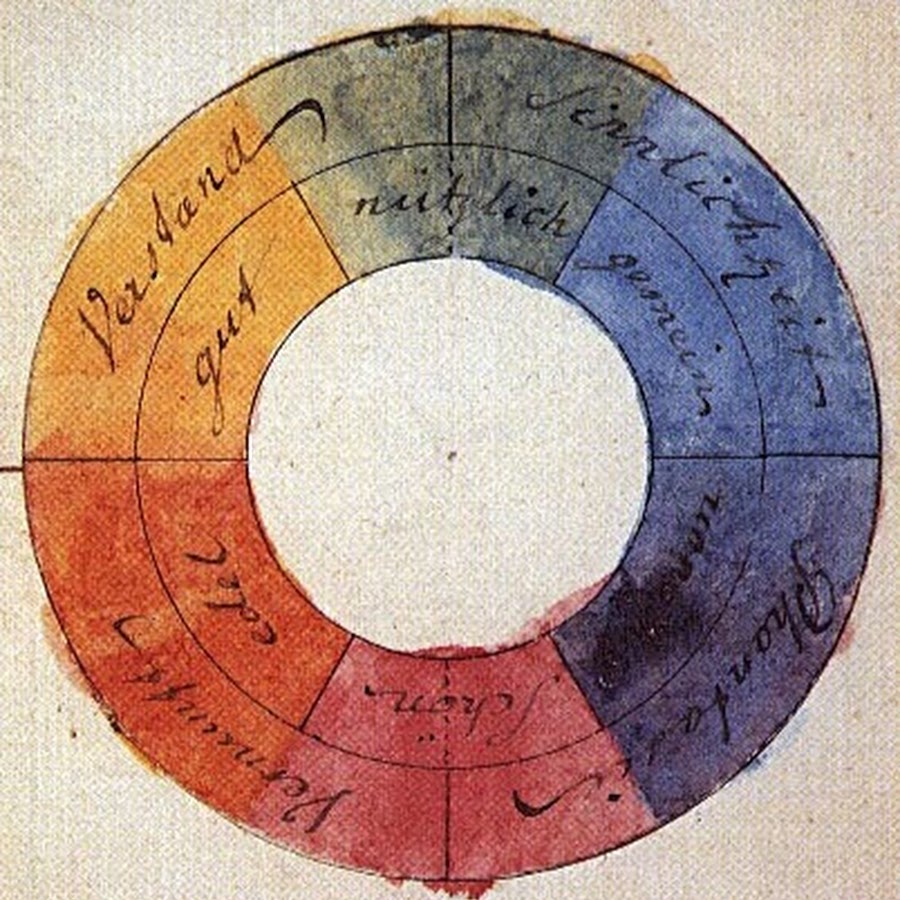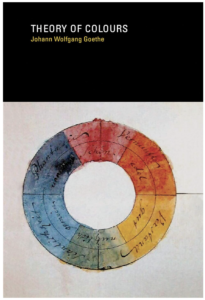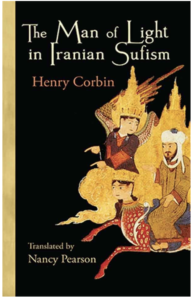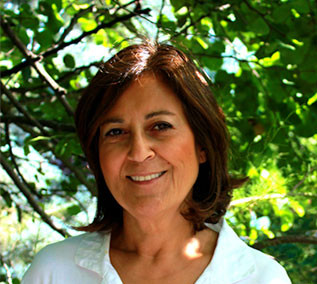
Goethe’s theory of colors and how the eye sees and simultaneously creates its own color

The great poet and savant Johann Wolfgang von Goethe (1749-1832) passionately explored the phenomenology of light and colors witnessed by the human eye, and collected his findings in Farbenlehre (Theory of Colors). His innovative doctrine of physiological colors, though dismissed by some due to lack of empirical data in his epoch, would later lead to wide repercussions in the centuries to come in art, physics and philosophy. He proclaimed that the colors referred to as physiological pertain to the subject, the organ of sight, to the eye which “itself is light,” and what is more, that these colors are the very conditions of the act of seeing, which remains incomprehensible if it is not viewed as an interaction, a reciprocal action.
Henri Corbin (1903-1978), the influential philosopher, theologian and Iranologist, compares Goethe’s doctrine of physiological colors with the phenomenon of colored lights perceived and interpreted by the Iranian Sufi masters in his erudite book The Man of Light .
 He refers to the visionary apperceptions, suprasensory senses, subtle organs or centers that develop – in brief, all the themes constituting the physiology of the man of light attested by the Sufi mystics and compares to Goethe’s research on colors, light and the human condition. Goethe postulates that the suprasensory perceptions of colors in their pure state, result from an inner activity of the subject and are not merely the result of passively received impressions of the material object.
He refers to the visionary apperceptions, suprasensory senses, subtle organs or centers that develop – in brief, all the themes constituting the physiology of the man of light attested by the Sufi mystics and compares to Goethe’s research on colors, light and the human condition. Goethe postulates that the suprasensory perceptions of colors in their pure state, result from an inner activity of the subject and are not merely the result of passively received impressions of the material object.
Goethe maps out the interplay of color, light and the subject :
The eye owes its existence to light. From an auxiliary, sensory apparatus, animal and neutral, light has called forth, produced for itself, an organ like onto itself; thus the eye was formed by light, of light, and for light, so that the inner light might come in contact with the outer light. At this very point we are reminded of the ancient Ionian School, which never ceased to repeat, giving it capital importance, that like is only known by like.
Intuitively echoing the Sufi tradition going back to ancient pre-Islamic Persia that “like aspires to its like”; that “like can be seen and known only by its like ”, he brings to light the verses of a mystic :
And thus we shall remember the words of an ancient mystic that I would paraphrase as follows :
If the eye were not by nature solar,
How should we be able to look at the light ?
If God’s own power did not live in us,
How would the Divine be able to carry us off in ecstasy ?
He unfolds :
When the eye sees a color, it is immediately activated and is fitted by nature to produce unconsciously, necessarily another color, its own color which together with the existing color includes the totality of the circle of color.
This organ – the eye is always so situated as to produce colors itself, to enjoy a pleasant sensation if something homogeneous to its nature is presented to it from the outside…
The eye searches at the side of a given colored space for a free space where it can produce the color called for by itself. This is an effort toward totality of the circle of colors, toward generality. There exactly one finds the fundamental law of harmony of colors.
And this is why if it happens that the totality of colors is presented to the eye from the outside as an object, the eye takes pleasure in it because at such a moment its own activity is presented to it as reality.
Henry Corbin commentates on his intriguing work :
Goethe treats explicitly the mystical significance of colors and of the mere experience of colors. He refutes pure exteriority, as if the eye did no more than passively reflect the outer world. He unveils the action of light. The perception of color is an action and reaction of the soul itself which is communicated to the whole being; an energy is then emitted through the eyes, a spiritual energy that cannot be weighed or measured quantitatively. It could only be evaluated by the mystical scales which the Sufi masters inferred to.
From the mutual exchange between like and like, from the interaction thus suggested in general, the idea of specific actions begins become clearer; these actions are never arbitrary and their effects are sufficient to attest that “physiological color” as such is an experience of the soul, that is, a spiritual experience of color itself.
[…]
Experience teaches us that particular colors produce definite mental impressions. These are the impressions on which the meanings of colors are based, rising by degrees to their mystical meaning, the very meaning which has held the attention of the Iranian Sufi masters.
Goethe beacons the effects of colors on the human being :
All that has been said has been an attempt to show that each color produces a definite effect on the human being and by that very fact reveals its essential nature to the eye as well as the soul. It follows that color can be used for certain physical, moral and aesthetic purposes. It can also be used to express the inner meanings, namely the symbolic use.
YELLOW![]()
This is the color nearest the light. before it mixes with blue to produce green it is to be seen in its utmost purity and beauty. In its highest purity it always carries with it the nature of brightness, and has a serene, gay, softly exciting character. It excites a warm, agreeable and a gladdening impression. On the other hand, extremely liable to contamination, and produces a very disagreeable effect if it is sullied, or in some degree tends to the minus side. Thus, the color of sulphur, which inclines to green, has a something unpleasant in it.
RED-YELLOW![]()
We can very easily augment yellow into reddish by condensing or darkening it. The color increases in energy, and appears in red-yellow more powerful and splendid. The red-yellow gives an impression of warmth and gladness, since it represents the hue of the intense glow of fire, and of the milder radiance of the setting sun.
YELLOW-RED![]()
The agreeable, cheerful sensation whşch red-yellow excites increaases to an intolerably powerful impression in bright yellow-red. The active side here is in its highest energy, and it is not to be wondered robust, uneducated men, should be especially pleased with this color. Among savage nations, the inclination for it has been universally remarked. In looking steadfastly at a perfectly yellow-red surface, the color seems actually to penetrate the organ. It produces an extreme excitement even when somewhat darkened. A yellow-red cloth disturbs and enrages animals. I have known men of education to whom its effect was intolerable…
BLUE![]()
As yellow is always accompanied with light, so it may be said that blue still brings a principle of darkness with it.
This color has a peculiar and almost indescribable effect on the eye. As a hue it is powerful, but it is on the negative side, and in its highest purity is, as it were, a stimulating negation. Its appearance, then, is a kind of contradiction between excitement and repose.
As the upper sky and distant mountains appear blue, so a blue surface seems to retire from us.
But as we readily follow an agreeable object that flies from us, so we love to contemplate blue, not because it advances to us, but because it draws us after it.
Blue gives us an impression of cold, and thus, again, reminds us of shade. We have before spoken of its affinity with black.
Rooms which are hung with pure blue, appear in some degree larger, but at the same time empty and cold.
The appearance of objects seen through a blue glass is gloomy and melancholy.
RED-BLUE![]()
We found yellow very soon tending to the intense state, and we observe the same progression in blue.
Blue deepens very mildly into red, and thus acquires a somewhat active character, although it is on the passive side. Its exciting power is, however, of a very different kind from that of the red-yellow. It may be said to disturb rather than enliven.
As augmentation itself is not to be arrested, so we feel an inclination to follow the progress of the color, not, however, as in the case of the red-yellow, to see it still increase in the active sense, but to find a point to rest in.
In a very attenuated state, this color is known to us under the name of lilac; but even in this degree it has a something lively without gladness.
BLUE-RED![]()
This unquiet feeling increases as the hue progresses, and it may be safely assumed, that a carpet of a perfectly pure deep blue-red would be intolerable. On this account, when it is used for dress, ribbons, or other ornaments, it is employed in a very attenuated and light state, and thus displays its character as above defined, in a peculiarly attractive manner.
As the higher dignitaries of the church have appropriated this unquiet color to themselves, we may venture to say that it unceasingly aspires to the cardinal’s red through the restless degrees of a still impatient progression.
RED![]()
The effect of this color is as peculiar as its nature. It conveys an impression of gravity and dignity, and at the same time of grace and attractiveness. The first in its dark deep state, the latter in its light attenuated tint; and thus the dignity of age and the amiableness of youth may adorn itself with degrees of the same hue.
Surrounding accompaniments of this color have always a grave and magnificent effect.
GREEN![]()
If yellow and blue, which we consider as the most fundamental and simple colors, are united as they first appear, in the first state of their action, the color which we call green is the result.
The eye experiences a distinctly grateful impression from this color. If the two elementary colors are mixed in perfect equality so that neither predominates, the eye and the mind repose on the result of this junction as upon a single color. The beholder has neither the wish nor the power to imagine a state beyond it. Hence for rooms to live in constantly, the green color is most generally selected.
People experience a great delight in color, generally. The eye requires it as much as it requires light.
Duygu Bruce







